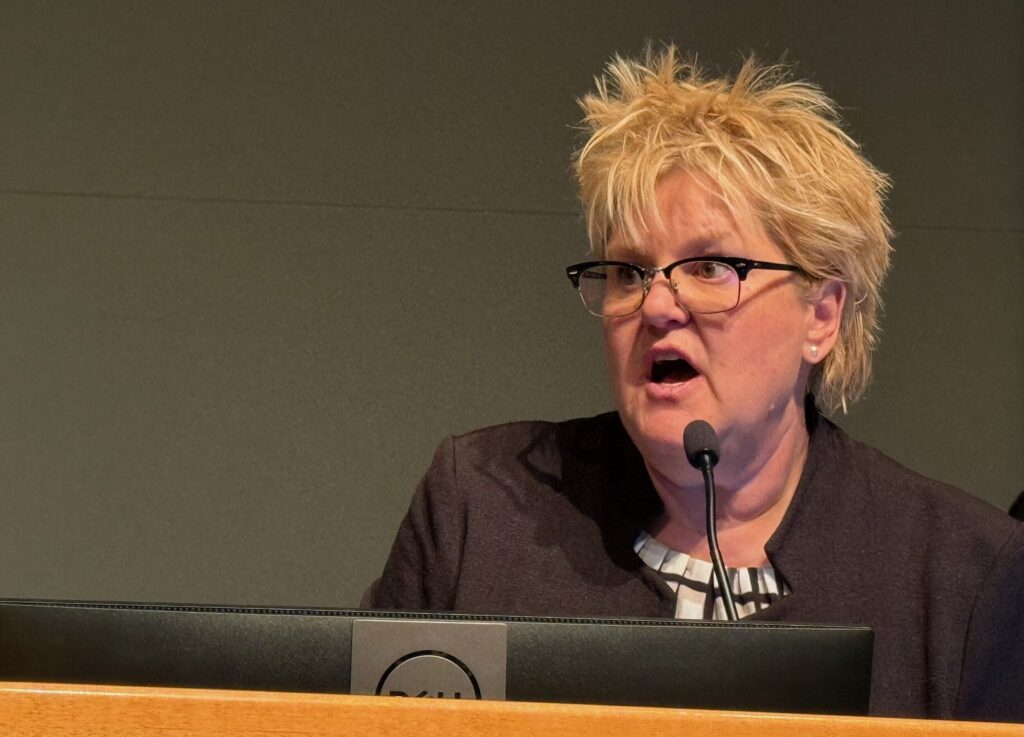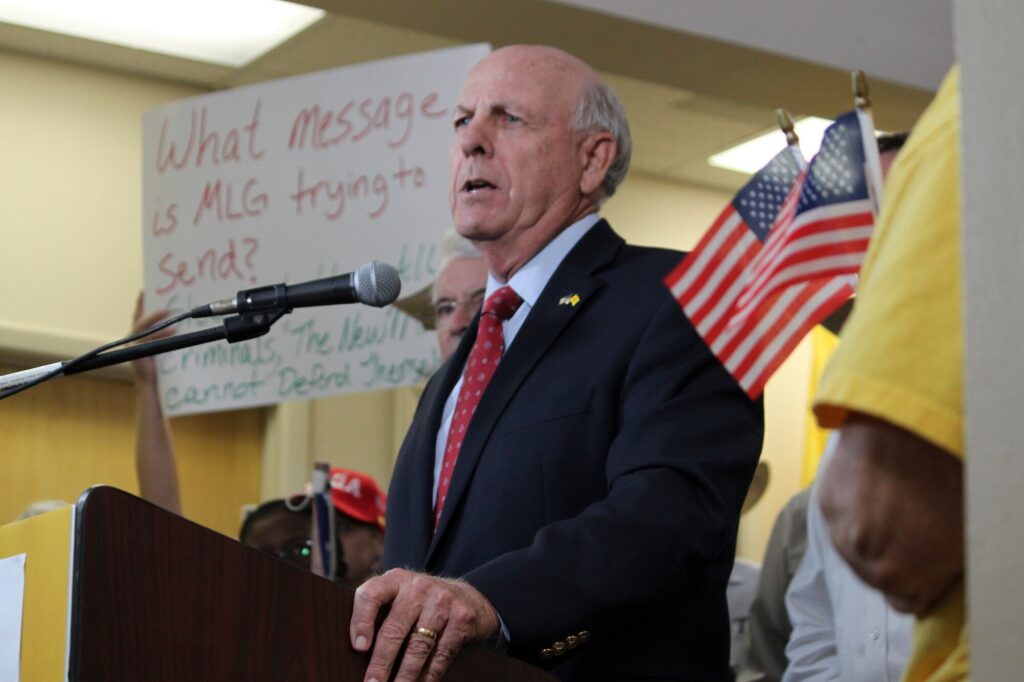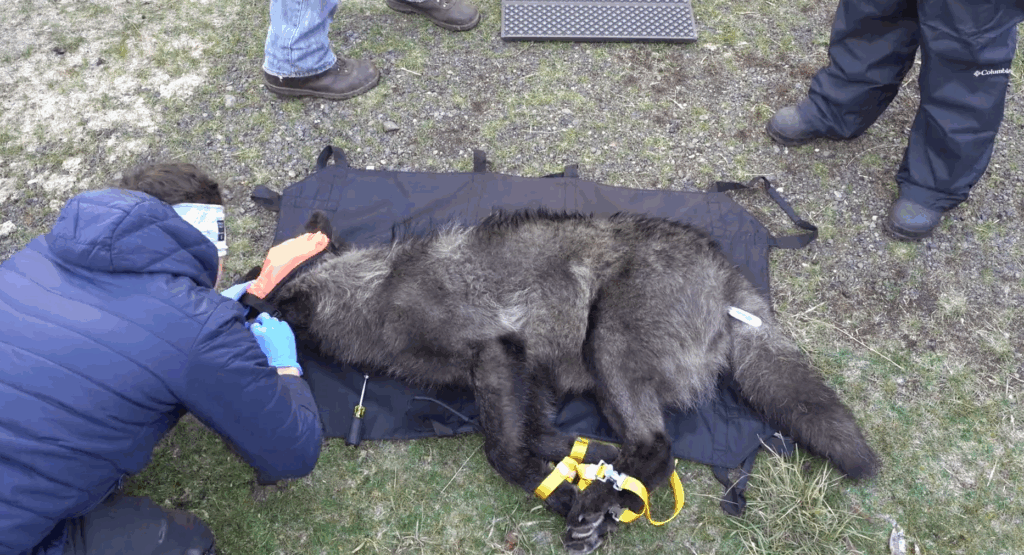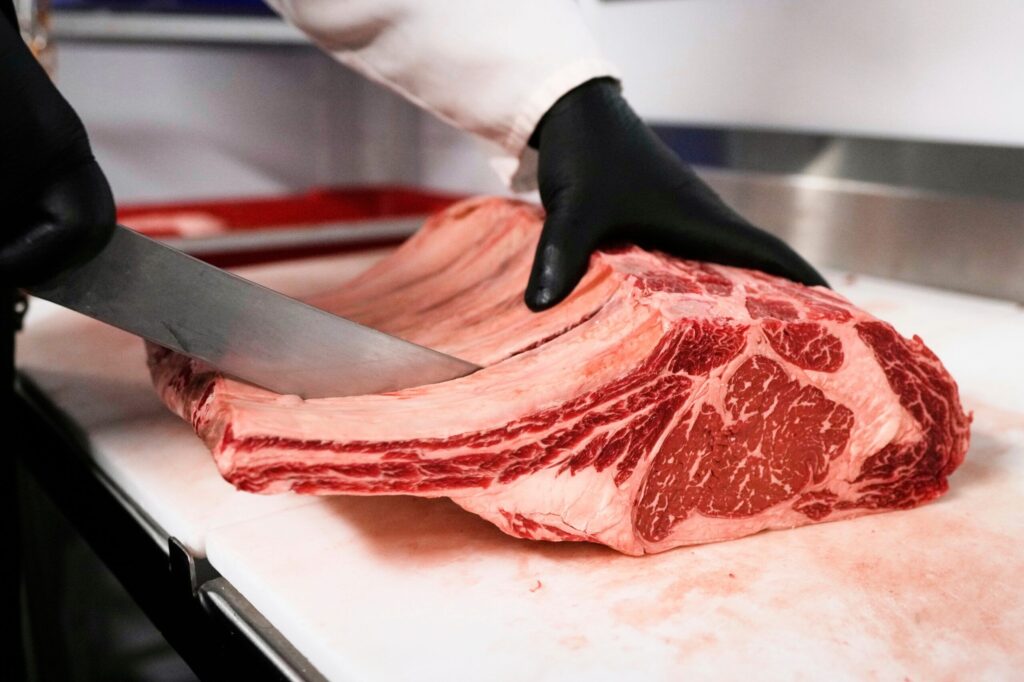Colorado is helping NASA get its mojo back

By Roger Highfield and James Langford, Washington Examiner
While standing before a group of astronauts in the White House last December, President Donald Trump signed the first of three space policy directives that marked an important step in returning American astronauts to the moon for the first time since 1972.
“This time, we will not only plant our flag and leave our footprint,” Trump said. “We will establish a foundation for an eventual mission to Mars. And perhaps, someday, to many worlds beyond.”
Once again, a U.S. president wants to restore America’s space supremacy, this time by returning humans to the moon followed by missions to Mars and beyond.
And Colorado is a center of efforts to reinvigorate America’s space program. It’s home to programs developing the deep-space vehicle Orion and the cargo-carrying space plane Dream Chaser, as well as the rocket company that will soon lift astronauts into orbit.
“There are echoes here of dented national pride following the Soviet Union’s pioneering launches of the Sputnik artificial satellite in 1957 and then the first man in space – Yuri Gagarin – in 1961,” said Doug Millard, space curator at the Science Museum in London.
The birth of the National Aeronautics and Space Administration, which turned 60 in October, was spurred by the Soviets’ success and would see the U.S. space effort soar in the ’60s to the dizzying heights of the greatest ever moment in human exploration.
A new Hollywood film, “First Man,” celebrates Neil Armstrong’s 1969 achievement as the first human to set foot on the moon.
Half a billion people around the world watched Armstrong’s televised image and heard him describe how he took “… one small step for man, one giant leap for mankind” on July 20, 1969. Armstrong and crewmate Buzz Aldrin spent 21 hours on the lunar surface as fellow crewmember Michael Collins orbited overhead.
But the retirement of the aging space shuttle fleet in 2011 began an embarrassing hiatus in America’s ability to launch humans into space, forcing the nation’s astronauts to hitch rides on Russian vehicles.
Now, the nation once again is trying to rekindle the pride and awe that can only come when a human being plants a flag on a distant space rock.
After the 30-year-long space shuttle program came to an official end as Atlantis rolled to a stop at the Kennedy Space Center in Florida on July 21, 2011, there came a resurgence in Russia’s role, and its venerable no-frills Soyuz spacecraft was left to fill the gap to transport crews – including U.S. astronauts – to and from the International Space Station.
The question was, what would follow the shuttle as an American-built means of carrying men and women into space?
ULA rocket to boost astronauts
NASA settled on parallel efforts to develop vehicles for human space flight – one initiative for earth-orbit transport; another for deep-space journeys to the moon and beyond.
For trips to and from the space station in earth orbit, NASA chose a longtime partner – Boeing Co. – and a newcomer – Elon Musk’s SpaceX – to develop crew vehicles, the Boeing CST-100 Starliner and the SpaceX Crew Dragon. In August, the agency named a team of astronauts who will fly the two orbital spacecraft. Both vehicles are slated for test flights in 2019.
SpaceX drew attention in February when it test launched its Falcon Heavy rocket from NASA’s historic Launch Complex 39A at Kennedy Space Center in Florida, placing a Tesla car into the heavens, and almost managed to bring all three of its component launch rockets back to Earth to save money (one crashed near its drone ship landing pad).
When the Boeing Starliner lifts into space, it’ll be carried by an Atlas V rocket operated by Centennial-based United Launch Alliance, a joint venture of Lockheed Martin Corp. and Boeing. ULA is the leading provider of government-satellite launch services.
Separately, a shuttle-like space plane known as the Dream Chaser – developed by the Louisville, Colorado-based space division of Sierra Nevada Corp. – is slated to begin carrying cargo to the space station for NASA as early as 2020. The vehicle was designed to carry crews as well.
For deep-space missions, NASA has settled on the Orion crew vehicle – an Apollo on steroids – which is being developed in Jefferson County at Lockheed Martin’s space division headquarters. It’s designed to carry crews to the moon and beyond – possibly, one day, to Mars.
While uncrewed spacecraft have already traveled much farther than Orion will go, sending back images of celestial objects as distant as the moons of Pluto, Orion must support a living, working crew.
For Orion, meeting NASA’s standards for a “human-rated vessel” means being ready for challenges far from Earth, said Dominic “Tony” Antonelli, a former space shuttle pilot who heads advanced programs for the company’s Jefferson County-based space division.
“You don’t have that capability if you’re going to Mars,” he said. “When you’re on your trip, you’re going to have to stay alive – which Orion provides a lot of capability to do – long enough to fix whatever issues come up.”
Innovations that help ensure that include model-based artificial intelligence that’s being developed to assist a crew as large as six grapple with mission challenges when they’re too far away from Earth for real-time conversation, he said.
“Anything you have time to wait and communicate with the ground about, you’ll wait for,” Antonelli added. “They’re already a lot smarter than you because they’re sitting still, thinking.”
Orion completed its first flight test, which was unmanned and lasted more than four hours, in December 2014, reaching an altitude of 3,600 miles above Earth’s surface. That’s 15 times higher than the International Space Station.
Next, a human crew will make the same trip, and in the 2020s, the ship will take astronauts to an asteroid. Mars is scheduled to follow in the next decade.
On a trip as long as that one, which might take about three years, the question isn’t whether something will happen, but “what’s going to happen,” Antonelli said.
With the capabilities of the ship Lockheed is building, “You could climb into Orion, button her up and stay safe for up to three weeks” at least, a time frame that could likely be expanded if needed, he said. “That would allow you time to analyze what your situation is, collect some data and communicate with the ground. Even if it took 20 minutes to get the data back to the ground, you’d have time living in Orion and staying safe to then come up with ideas on how to take care of your situation.”
New NASA chief
At the end of April this year, after more than a year of delay and wrangling, NASA’s 13th administrator was finally appointed to lead the 18,000-strong staff of the organization.
Jim Bridenstine, the first politician to get the job, is a former military pilot who flew missions in Iraq and Afghanistan and has taken a keen interest in shifting policy more toward using commercial satellite technology, an approach will likely guide him at NASA.
At his swearing in, where he was welcomed by the crew of the International Space Station in a live link, Bridenstine declared: “NASA represents what is best about the United States of America.”
On May 24, Trump signed a second Space Policy Directive to reform and streamline the United States commercial space regulatory framework, a popular move in industry circles.
The next month brought the third Space Policy Directive to make space more secure by seeking to reduce the growing threat of orbital space junk, managing space traffic more effectively by sharing relevant data, and tasking the Department of Defense to focus on protecting U.S. space assets and interests.
The president also ordered Gen. Joseph Dunford, chairman of the Joint Chiefs of Staff, to “immediately begin the process necessary to establish a Space Force as the sixth branch of the armed forces.”
Meanwhile, NASA is working on its own super rocket, the Space Launch System, SLS, which would be the most powerful ever designed. So far, the agency has spent around $10 billion on the development of the SLS, which will come in several flavors – Block 1, Block 1B and Block 2 – optimized for carrying astronauts, cargo or both, along with versions that carry a more powerful upper stage of the rocket for deep space exploration.
The first SLS – a Block 1 carrying an unmanned Orion spacecraft and 13 tiny, boxy satellites called “CubeSats” – is scheduled to lift off at the end of next year or the beginning of 2020 from Launch Complex 39B at Kennedy. This pioneering rocket with its lift-off thrust of 8.8 million pounds will be tested to see if it can go farther than any previous mission, a flexible and evolvable launch vehicle able to meet the most challenging deep space crew and cargo needs. The first crewed Orion flight is expected by 2023.
While the launch of a Falcon Heavy costs about $100 million, The launch of the SLS is expected to cost well over $1 billion because it has to be safe enough to carry astronauts and reach deep space, 1,000 times farther away than low-Earth orbit.
NASA is continuing its preparations to boldly go farther into space than ever before. The agency has been studying an orbital outpost concept – the Gateway – to be located in the vicinity of the moon. NASA is already planning to procure the power and propulsion unit and, as part of the fiscal 2019 budget proposal, and aims to build the Lunar Orbital Platform-Gateway in the 2020s.
What does former Apollo command module pilot Al Worden, one of the 24 people who has flown to the moon, make of Trump’s announcement to go back?
“I think it is time for our president to challenge the agency to do something great again and provide the funds to accomplish it,” he said. “However, I am not sure going back to the moon is the answer. We have been there, so just going back is not such a big deal. Unless, of course, the idea is to live for extended periods there to understand the challenges we will have on Mars.”
And while he believes that NASA “has the manpower and smarts” to deliver the president’s vision, he is not so sure the funding is there. Nor does he think that private companies provide the answer. “They are driven by profit, and the long-range projects are going to be expensive. … I don’t see how a private company can reach out as far as needed and do the jobw safely.”
Though it took Cold War rivalries to put the first man on the moon, Worden believes it’s going to take cooperation between the world’s space-faring nations if we are going to venture on to Mars.
“The only way we are going to go to Mars and be successful is to do it as a cooperative program with other countries,” Worden said. “The cost will be staggering and no one country can do it alone. A pooling of resources will be necessary in my opinion.”
Worden is not alone in thinking this way; other Apollo astronauts have said the future lies in cooperation, not competition.
That was the verdict of Jim Lovell, commander of Apollo 13, and of Aldrin, who said rivalry “would make it very, very messy. … We must come together.”
A NASA spokesman said all options remain open.
“To achieve the goal to extend humanity’s presence in the solar system will require the best research, technologies, capabilities and contributions from the U.S. private sector and international partners,” the spokesman said. “There will be an opportunity for a wide range of rockets to play a role in our future exploration endeavors. We are developing a flexible deep space infrastructure to support a steady cadence of increasingly complex missions that strengthens American leadership in space.”
Trump wants to see a flag planted by a human on another world, and there is no doubt this will be a global event. But in the longer term, and in adventures beyond the moon, will that flag represent everyone here on Earth, a coalition of governments, one nation or even a single buccaneering individual?
Mark Harden of Colorado Politics contributed.













